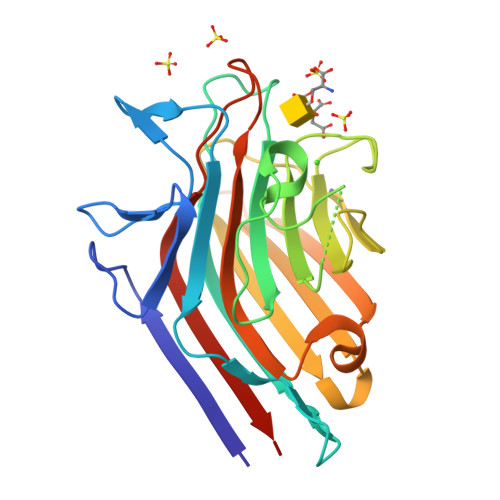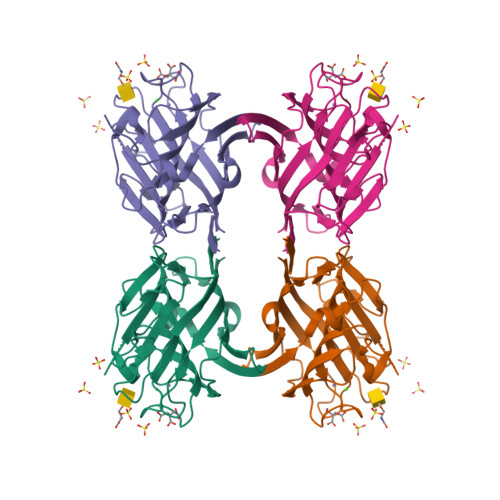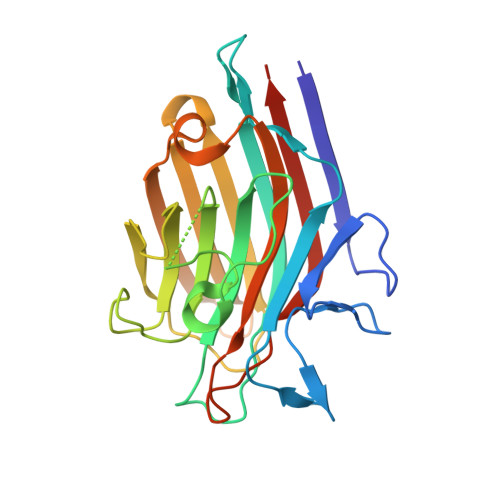High-resolution structure of a new Tn antigen-binding lectin from Vatairea macrocarpa and a comparative analysis of Tn-binding legume lectins.
Sousa, B.L., Silva Filho, J.C., Kumar, P., Pereira, R.I., yskowski, A., Rocha, B.A., Delatorre, P., Bezerra, G.A., Nagano, C.S., Gruber, K., Cavada, B.S.(2014) Int J Biochem Cell Biol 59C: 103-110
- PubMed: 25499445
- DOI: https://doi.org/10.1016/j.biocel.2014.12.002
- Primary Citation of Related Structures:
4U2A, 4U36 - PubMed Abstract:
Plant lectins have been studied as histological markers and promising antineoplastic molecules for a long time, and structural characterization of different lectins bound to specific cancer epitopes has been carried out successfully. The crystal structures of Vatairea macrocarpa (VML) seed lectin in complex with GalNAc-α-O-Ser (Tn antigen) and GalNAc have been determined at the resolution of 1.4Å and 1.7Å, respectively. Molecular docking analysis of this new structure and other Tn-binding legume lectins to O-mucin fragments differently decorated with this antigen provides a comparative binding profile among these proteins, stressing that subtle alterations that may not influence monosaccharide binding can, nonetheless, directly impact the ability of these lectins to recognize naturally occurring antigens. In addition to the specific biological effects of VML, the structural and binding similarities between it and other lectins commonly used as histological markers (e.g., VVLB4 and SBA) strongly suggest VML as a candidate tool for cancer research.
Organizational Affiliation:
Departamento de Bioquímica e Biologia Molecular, Universidade Federal do Ceará, Av. Mister Hull s/n, Bloco 907, Box 6043, 60440-970 Fortaleza, Ceará, Brazil.






















